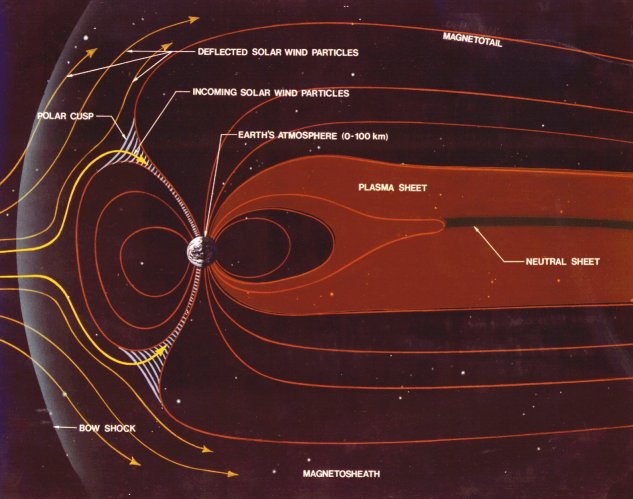Subarctic phenomena
Aurora Borealis
 The aurora has long fascinated people in northern latitudes. The aurora was subject to much mythology amongst Northern cultures. The first attempts to research the scientific origin of the aurora took place in the 18th century, when it was concluded that the aurora is related to magnetism.
The aurora has long fascinated people in northern latitudes. The aurora was subject to much mythology amongst Northern cultures. The first attempts to research the scientific origin of the aurora took place in the 18th century, when it was concluded that the aurora is related to magnetism.
The aurora occurs in the high latitude regions of the arctic and antarctic. The auroras of the north and south are related and named aurora borealis and aurora australis. The aurora is primarily seen in the sparsely populated high latitude part of the northern hemisphere, though on occasion can be seen in lower latitudes. The aurora australis is not seen as often as the aurora borealis, because it takes place in a very sparsely populated part of the globe. (Photo on Right: http://climate.gi.alaska.edu/Curtis/curtis.html)
Solar Wind
Solar wind is a plasmic-like substance that originates and the Sun. Solar wind travels approximately 200 to 1500 km per second. Solar plasma consists primarly of ionized hydrogen and helium, which travel as protons and electrons. The protons are positively charged and electrons negatively charged and carry magnetic energy.
Magnetosphere
Earth (and other planets with a magnetic field) has magnetosphere around its atmosphere. The magnetosphere is a non-spherical area around the planet consisting of ions and electrons (plasma). The solar wind coming from the Sun is deflected by the magnetosphere. Notice the shape of the magnetsophere in the diagram below, that the magnetosphere facing the Sun covers a much smaller area than the other side of Earth. The shape is determined by the flow of solar wind and Earth's magnetic field.

source: http://science.nasa.gov/newhome/headlines/guntersville98/images/mag_sketch_633.jpg
How the aurora is formed
Auroras are formed when solar wind approaches Earth and is deflected by the magnetosphere. Since the plasmas in the solar wind and in the magnetosphere conduct electricity, and the moving solar wind causes a change in the magnetic field an electric current is induced in the plasmas.
The phenomenom itself occurs at Earth's ionosphere, which occurs when the electric current flows through the ionosphere betweent the north and south poles. When this happens, the ionosphere acts as an ohmic resistor in which there is a voltage difference between the two poles (up to 200,000 V during the most intense auroras).
More information
The formation of the aurora is a complex topic that is currently being researched. The following links may be useful or interesting:
Aurora Forecast (UAF Geophysical Intstitute)
 The aurora has long fascinated people in northern latitudes. The aurora was subject to much mythology amongst Northern cultures. The first attempts to research the scientific origin of the aurora took place in the 18th century, when it was concluded that the aurora is related to magnetism.
The aurora has long fascinated people in northern latitudes. The aurora was subject to much mythology amongst Northern cultures. The first attempts to research the scientific origin of the aurora took place in the 18th century, when it was concluded that the aurora is related to magnetism.
